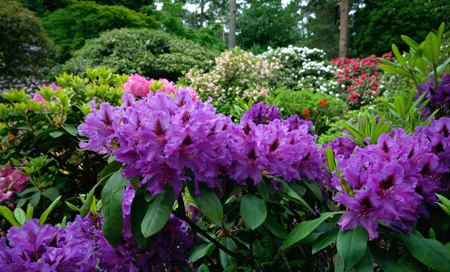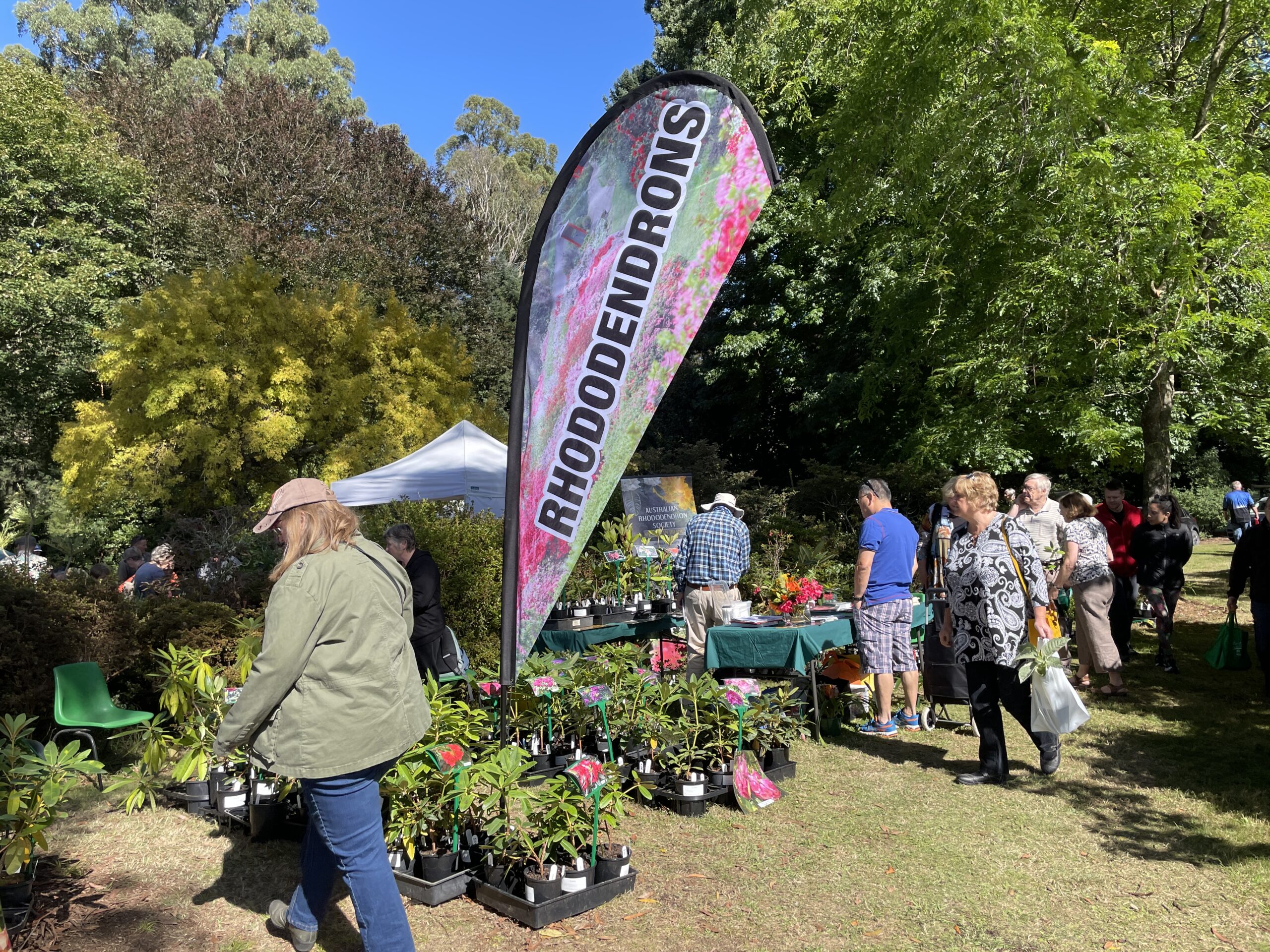ARS Victoria Newsletter – October 2017
RHODODENDRONS IN SWAMPS
Swamplands are not habitats that we in Australia generally associate with Rhododendrons, however the USA has a range of species of deciduous azaleas that can survive or even prefer swamplands. The best known is R. viscosum, which we know of as Swamp Azalea or Swamp Honeysuckle, but in the USA seems to be more commonly called Clammy Azalea. Synonyms for R. viscosum are numerous and include Azalea serrulata, A. viscosa, R. coryi, R. oblongifolium, R. nitidum, R. serrulatum, R. viscosum var. aemulans, R. viscosum var. glaucum, R. viscosum var. montanum, R.viscosum var. nitidum, R. viscosum var. serrulatum, and R. viscosum var. tomentosum
R. viscosum is a deciduous shrub growing to 4 m wide but only 1-2 m tall. Leaves are lustrous green on both sides, medium sized, 3.5 - 9 x 1.5 – 4 cm and arranged at the end of branches. They turn orange to maroon in autumn before falling. The flowers are white, with a lavender tube, 3 - 4 cm long with 5 narrow spreading lobes. The 5 stamens extend well beyond the flower. They are beautifully scented with a slight lemony fragrance. The flowers of this deciduous azalea appear after the leaves. It is called Clammy Azalea because of its very sticky corolla. It occurs in the eastern USA from Maine to Florida in a range of habitats including montane forest. It’s ability to grow in or along swamps is its speciality but other Rhododendrons of this section (Pentanthera subsection Pentanthera) also grow or at least can survive in these wet habitats – these include R. arborescens, R. prinophyllum, R. periclymenoides, R. canescens and R. atlanticum.
R. arborescens is a white flowered wetland species from Pennsylvania to Alabama that can be found in a range of habitats including swamps. It differs from R. viscosum in having smooth branches and twigs.
R. prinophyllum is a hairy leaved shrub to 3 m high with pink flowers that have a fragrance like cloves. It grows in swampy, wet areas like bogs, thickets and along streams but also occurs in drier habitats like rocky woods. It has a wide but scattered distribution from Quebec to Arkansas and Virginia to Oklahoma. It’s swamp habitats appear to be more sphagnum bogs than wooded swamps.
To read more of this and other interesting articles download the newsletter.


Latest Newsletters
- Emu Valley
- ARS Victoria
- Emu Valley
- ARS Victoria



